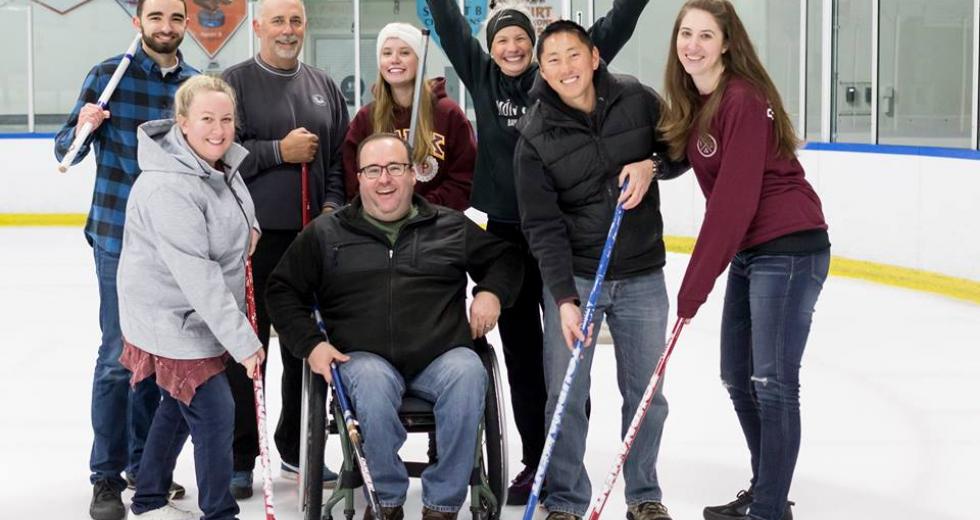A friend swayed Caitlin Kiernan, 31, a Ph.D. student in agricultural resource economics at UC Davis, to join a recent Learn-To-Curl night at Roseville’s Skatetown Ice Arena. She knew zero about the sport that joined the Winter Olympics in 1998 in Nagano, Japan.
Curling turned out to be a quite a pleasant surprise for Kiernan. “It’s actually fun and a lot easier to start than I expected,” she says. Such sentiments are the rule and not the exception among the 40 adults and youth learning to curl under the tutelage of experienced players such as Evan Tudor Elliott, of Sacramento, at Skatetown.
Brian Feldman and Larissa Spangler teach young students how to
curl. (Photo credit: Laura Lunetta)
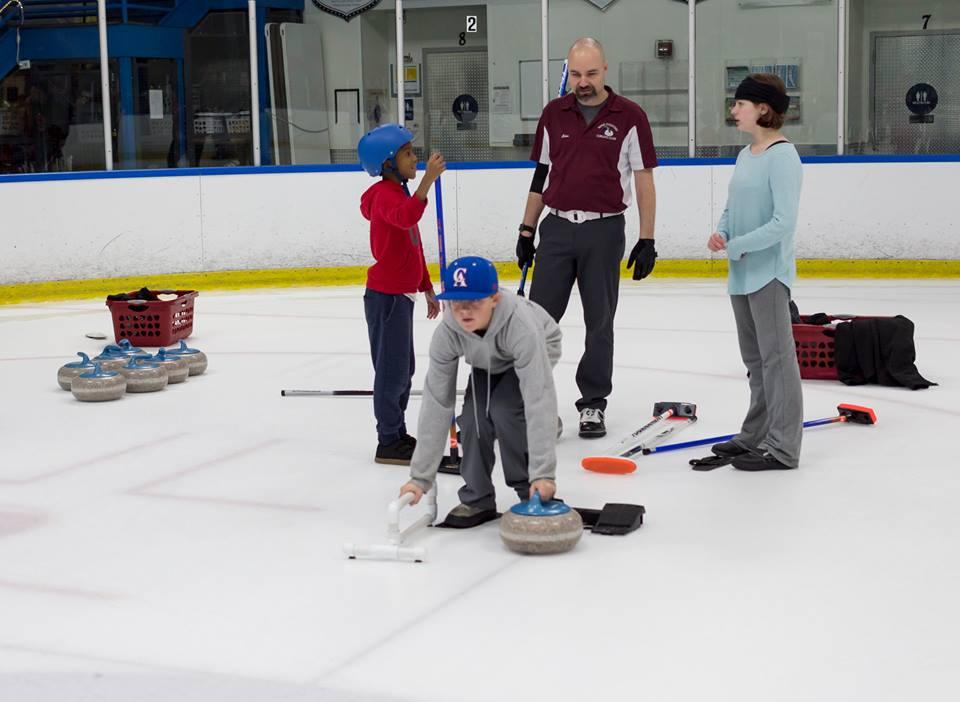
Elliott and other curling veterans teach fundamentals to the beginners, including foot, hand and hip positioning. His affable manner and self-deprecating humor elicit chuckles from students, allaying the nerves people like Kiernan often have upon trying this sport for the first time. During a recent class for newbies, Elliott compares curling to lawn bowling, drawing laughter.
Curling is one of those obscure sports that people don’t often think about until the Winter Olympics, when the event gets regular television coverage for a brief stint. The U.S. has a women’s, men’s and mixed doubles team in this year’s Olympics, which run through Feb. 25 in PyeongChang, South Korea. And while the U.S. isn’t considered a top international contender, the winter sport of curling is gaining some local traction right here in Northern California.
Perhaps due in part to the playing surface of cold ice and low temperatures, curling builds camaraderie, says Katie Feldman, president of the Wine Country Curling Club, an all-volunteer nonprofit group based in Roseville with 65 members, which sponsored the recent How-To-Curl event at Skatetown. The WCCC is one of six curling clubs in California, and has taught about 150 people to curl over the past year, according to Feldman. She expects the Winter Olympics to produce another bump in interest.
Instructor Evan Tudor Elliott explains how the stone travels down
the sheet of ice to curling students. (Photo credit: Laura
Lunetta)
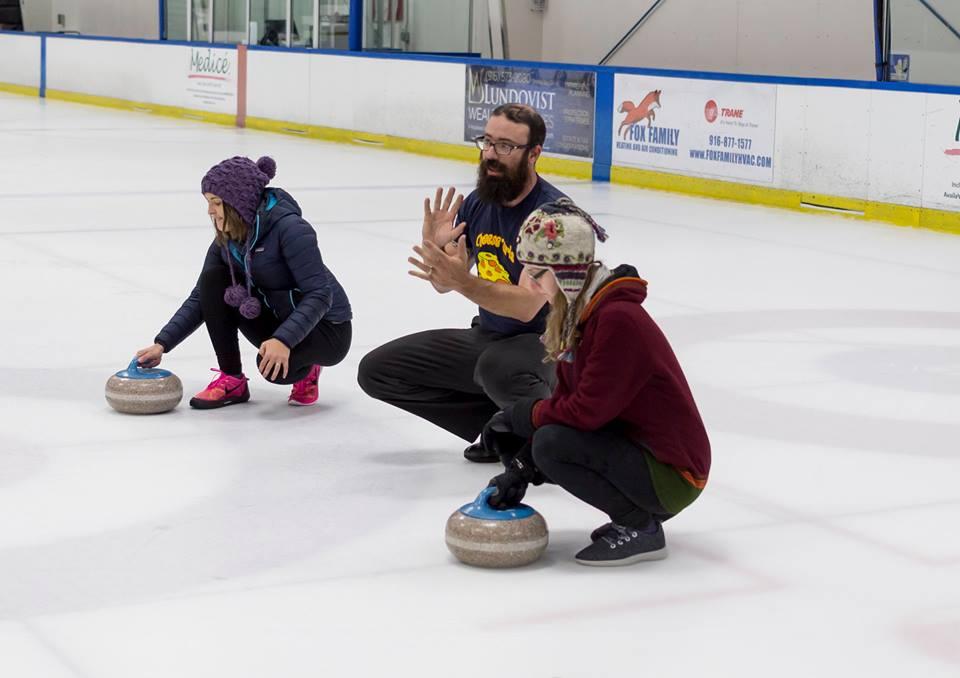
Feldman credits Placer Valley Tourism, a nonprofit organization funded with fees from per-room bookings at 23 local hotels, for helping to promote curling. For instance, Donna Dotti, head of sales for the tourism organization, says it granted the WCCC a total of $10,000 between 2015 and 2016 to buy granite curling stones. That’s because the WCCC holds curling tournaments, or bonspiels, that attract dozens of visiting teams to Roseville — and hotels within Placer County — over multiple days. The next tournament will be held at Skatetown on March 23-25.
An Ancient Sport
Curling began in Scotland over 500 years ago. Elliott discovered the ancient sport while attending the University of Edinburgh in Scotland for a semester. He has been curling for six years, crediting the sport’s supportive community of players for sticking with it.
Instructor Shawn Gunst, right, teaches the club’s first
Learn-to-Curl class of 2018. (Photo credit: Laura Lunetta)
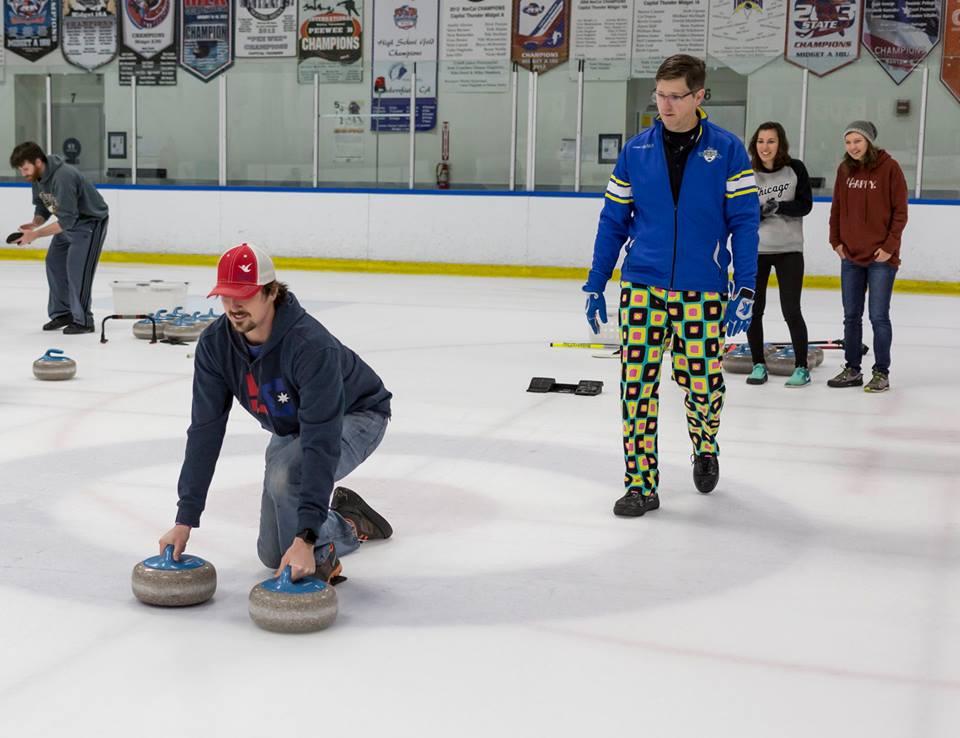
“It’s also a great way to meet new people here and around Canada and the U.S.,” he says. Canada produces the world’s best curlers, and its teams are expected to take home medals once again in this year’s Olympics.
Before stepping onto the ice, where the temperature is a balmy 45 degrees, Elliott details the rules of curling. Players push a granite stone — weighing 22 pounds for youth and 45 pounds for adults — on an ice surface, or sheet, then use brooms to sweep aside the stone to influence its path (curling was originally nicknamed “the roaring game” due to the sound the granite stones made on ice). That movement warms the ice and alters its friction for the stone. The aim of the two opposing teams of four players is to push the stone to reach closest to a target, or the house, of four concentric circles. The team with the most points wins. Players wear rubber shoe grips on one foot and a Teflon-bottomed shoe, or slider, on the other.
Building Local Interest
Caitlin Kiernan curling on the ice (Photo credit: Seth
Sandronsky)
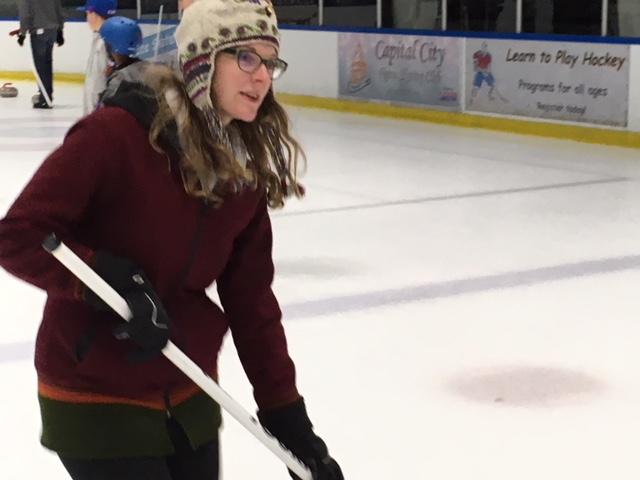
Curling boasts a big tent, as people of many capacities can participate. For instance, there is wheelchair curling, blind curling, deaf curling, stick curling and Special Olympics curling. Curling is played in more than 180 clubs in about 40 states, with Wisconsin and Minnesota boasting the most participation. More than 20,000 curlers are registered with the United States Curling Association. Because the sport is typically held indoors, seasons can run year-round — and be offered in warm-weather climates like Roseville.
Crucially for the sport’s future, curling is attracting youth. Larissa Spangler, 13, and Brian Feldman, Jr., 14, are two examples. “That’s a good thing,” says Brian Feldman, Sr., the latter’s father and Katie’s husband. He teaches the sport to newcomers. He first saw curling on television at the Nagano Olympics, which sparked his interest in the sport.
Curling is fun and cost-friendly, Feldman says. Equipment costs about $150 — by contrast, equipping for other ice-sports such as ice hockey can require spending up to 10 times as much.
Curling is also a family affair, say its proponents. Just ask the Feldmans and Spanglers. Larissa’s mother, Deanna Spangler, of Auburn, has been curling for 18 months. “It’s the only sport I can play competitively with my husband,” she says with a laugh.



